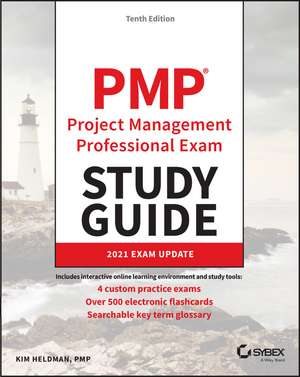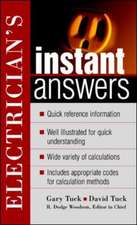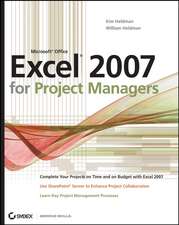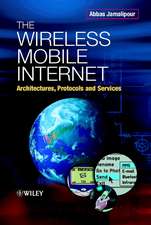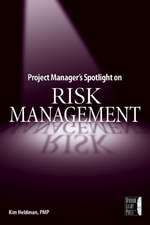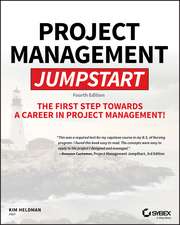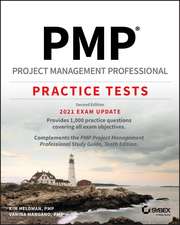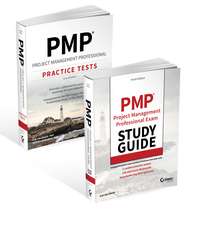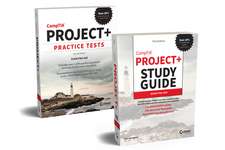PMP Project Management Professional Exam Study Guide 2021 Exam Update, Tenth Edition: Sybex Study Guide
Autor K Heldmanen Limba Engleză Paperback – 15 oct 2020
Din seria Sybex Study Guide
- 20%
 Preț: 206.41 lei
Preț: 206.41 lei - 20%
 Preț: 204.48 lei
Preț: 204.48 lei -
 Preț: 416.00 lei
Preț: 416.00 lei - 20%
 Preț: 204.15 lei
Preț: 204.15 lei -
 Preț: 260.98 lei
Preț: 260.98 lei - 20%
 Preț: 272.31 lei
Preț: 272.31 lei - 20%
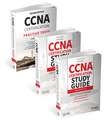 Preț: 467.73 lei
Preț: 467.73 lei - 20%
 Preț: 343.55 lei
Preț: 343.55 lei - 20%
 Preț: 205.15 lei
Preț: 205.15 lei - 20%
 Preț: 289.39 lei
Preț: 289.39 lei - 20%
 Preț: 272.52 lei
Preț: 272.52 lei -
 Preț: 322.04 lei
Preț: 322.04 lei - 20%
 Preț: 304.03 lei
Preț: 304.03 lei -
 Preț: 351.33 lei
Preț: 351.33 lei -
 Preț: 404.31 lei
Preț: 404.31 lei - 20%
 Preț: 175.26 lei
Preț: 175.26 lei -
 Preț: 325.22 lei
Preț: 325.22 lei -
 Preț: 288.65 lei
Preț: 288.65 lei -
 Preț: 383.42 lei
Preț: 383.42 lei - 20%
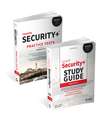 Preț: 399.67 lei
Preț: 399.67 lei - 8%
 Preț: 439.49 lei
Preț: 439.49 lei -
 Preț: 427.34 lei
Preț: 427.34 lei - 8%
 Preț: 441.16 lei
Preț: 441.16 lei - 20%
 Preț: 274.58 lei
Preț: 274.58 lei -
 Preț: 322.04 lei
Preț: 322.04 lei -
 Preț: 413.10 lei
Preț: 413.10 lei - 20%
 Preț: 298.46 lei
Preț: 298.46 lei - 20%
 Preț: 274.41 lei
Preț: 274.41 lei -
 Preț: 257.90 lei
Preț: 257.90 lei - 20%
 Preț: 289.18 lei
Preț: 289.18 lei - 20%
 Preț: 309.99 lei
Preț: 309.99 lei - 20%
 Preț: 221.90 lei
Preț: 221.90 lei - 20%
 Preț: 411.29 lei
Preț: 411.29 lei - 20%
 Preț: 276.82 lei
Preț: 276.82 lei - 20%
 Preț: 278.23 lei
Preț: 278.23 lei -
 Preț: 326.42 lei
Preț: 326.42 lei - 20%
 Preț: 224.78 lei
Preț: 224.78 lei -
 Preț: 294.97 lei
Preț: 294.97 lei -
 Preț: 291.72 lei
Preț: 291.72 lei -
 Preț: 321.94 lei
Preț: 321.94 lei - 20%
 Preț: 281.57 lei
Preț: 281.57 lei - 20%
 Preț: 251.37 lei
Preț: 251.37 lei -
 Preț: 324.94 lei
Preț: 324.94 lei - 20%
 Preț: 308.58 lei
Preț: 308.58 lei -
 Preț: 432.33 lei
Preț: 432.33 lei -
 Preț: 407.96 lei
Preț: 407.96 lei - 20%
 Preț: 289.14 lei
Preț: 289.14 lei -
 Preț: 340.55 lei
Preț: 340.55 lei - 20%
 Preț: 280.68 lei
Preț: 280.68 lei
Preț: 365.37 lei
Preț vechi: 397.14 lei
-8% Nou
Puncte Express: 548
Preț estimativ în valută:
69.92€ • 72.73$ • 57.72£
69.92€ • 72.73$ • 57.72£
Carte disponibilă
Livrare economică 25 martie-08 aprilie
Livrare express 08-14 martie pentru 72.94 lei
Preluare comenzi: 021 569.72.76
Specificații
ISBN-13: 9781119658979
ISBN-10: 1119658977
Pagini: 912
Dimensiuni: 190 x 234 x 48 mm
Greutate: 1.44 kg
Ediția:10th Edition
Editura: Sybex
Seria Sybex Study Guide
Locul publicării:Hoboken, United States
ISBN-10: 1119658977
Pagini: 912
Dimensiuni: 190 x 234 x 48 mm
Greutate: 1.44 kg
Ediția:10th Edition
Editura: Sybex
Seria Sybex Study Guide
Locul publicării:Hoboken, United States
Cuprins
Introduction xix Assessment Test xxix Answers to Assessment Test xlix Chapter 1 Building the Foundation 1 Establishing the Foundation 3 Projects vs. Operations 4 Project Characteristics 6 What Is Project Management? 7 Programs 8 Portfolios 8 Organizational Project Management 11 Project Management Offices 11 Understanding How Projects Come About 13 Needs and Demands and Other Factors That Lead to Project Creation 14 Skills Every Good Project Manager Needs 17 Technical Project Management Skills 18 Business Management and Strategic Skills 18 Communication Skills 19 Organizational and Planning Skills 19 Conflict Management Skills 20 Negotiation and Influencing Skills 20 Leadership Skills 21 Team-Building and Motivating Skills 21 Role of a Project Manager 22 Understanding Project Management Process Groups 22 Determining a Project Methodology or Approach 28 Life Cycle Categories 29 Predictive Life Cycle Methodology 30 Agile Methodologies 33 Hybrid 38 Project Life Cycles 38 Understanding How This Applies to Your Next Project 39 Summary 40 Exam Essentials 41 Review Questions 43 Chapter 2 Assessing Project Needs 49 Exploring the Project Management Knowledge Areas 51 Project Integration Management 53 Project Scope Management 56 Project Schedule Management 57 Project Cost Management 58 Project Quality Management 59 Project Resource Management 59 Project Communications Management 60 Project Risk Management 62 Project Procurement Management 62 Project Stakeholder Management 63 Assessing Project Viability 64 Using Project Selection Methods 65 Assessing Project Needs and Creating the Project Charter 73 Enterprise Environmental Factors 78 Organizational Process Assets 78 Tools and Techniques 81 Formalizing and Publishing the Project Charter 82 Pulling the Project Charter Together 83 Key Stakeholders 84 Project Charter Sign-Off 87 Maintaining Project Artifacts 88 Introducing the Kitchen Heaven Project Case Study 89 Understanding How This Applies to Your Next Project 93 Summary 94 Exam Essentials 96 Review Questions 98 Chapter 3 Delivering Business Value 103 Understanding Organizational Structures 106 Functional Organizations 108 Project-Oriented Organizations 112 Matrix Organizations 114 Other Organizational Structures 118 PMO 118 PMO in an Agile Environment 119 Project-Based Organizations 121 Influences of Organizational Structure on Agile Methodologies 122 Identifying Stakeholders 123 Discovering Stakeholders 124 Stakeholder Analysis 126 Categorizing Stakeholders 127 Stakeholder Register 134 Stakeholders on an Agile Project 135 Six Sigma Adaptive Methodology 137 Delivering Business Value 140 Business Value Network 142 Assessing Business Value 143 Delivering Business Value Incrementally 145 Examining Business Value 147 Subdividing Project Tasks 148 Understanding How This Applies to Your Next Project 151 Summary 152 Exam Essentials 153 Review Questions 155 Chapter 4 Developing the Project Scope 161 Developing the Project Management Plan 164 Project Complexity 168 Data Gathering and Interpersonal Skills 168 Documenting the Project Management Plan 169 Documenting the Project Management Plan Using a Predictive Methodology 172 Plan Scope Management 173 Alternatives Analysis 175 Documenting the Scope Management Plan 177 Documenting the Requirements Management Plan 178 Collecting Requirements 178 Gathering Documents for the Collect Requirements Process 180 Gathering and Documenting Requirements 185 Finalizing Requirements 189 Defining Scope 192 Writing the Project Scope Statement 194 Managing the Product Backlog 199 Creating the Work Breakdown Structure 201 Decomposing the Deliverables 202 Constructing the WBS 203 Backlog 211 Finalizing the WBS 212 Understanding How This Applies to Your Next Project 216 Summary 218 Exam Essentials 219 Review Questions 221 Chapter 5 Creating the Project Schedule 229 Creating the Schedule Management Plan 232 Defining Activities 233 Creating the Activity List 234 Breaking Down User Stories 235 Understanding the Sequence Activities Process 237 Precedence Diagramming and Leads and Lags 238 Project Management Information System 243 Project Schedule Network Diagrams 243 Estimating Activity Resources 244 How to Estimate Activity Resources 245 Documenting Resource Requirements 246 Estimating Resources in an Adaptive Methodology 247 Estimating Activity Durations 247 Project Calendars and Other Considerations 248 Estimating Techniques 249 Duration Estimates 253 Estimating Activity Durations Using Adaptive Methodologies 255 Developing the Project Schedule 257 Gather Documents to Assist in Developing the Schedule 257 Developing the Project Schedule 258 Project Schedule and the Schedule Baseline 272 Using a Kanban Board and Scrum Board 277 Scrum Board 279 Combining Techniques 280 Agile Release Planning 281 Applying Process Groups in an Agile Approach 281 Understanding How This Applies to Your Next Project 286 Summary 287 Exam Essentials 289 Review Questions 291 Chapter 6 Developing the Project Budget and Engaging Stakeholders 297 Creating the Cost Management Plan 300 Performing Plan Cost Management 301 Creating the Cost Management Plan 302 Estimating Costs 303 Estimating Techniques 307 Estimating Costs for an Agile Project 308 Creating the Cost Estimates 309 Establishing the Cost Baseline 311 Techniques for Developing the Project Budget 313 Developing the Cost Baseline 314 Understanding Stakeholders 318 Analyzing Stakeholders 319 Stakeholder Engagement Plan 320 Mentoring Stakeholders 321 Engaging Stakeholders in an Adaptive Methodology 322 Communicating the Plan 323 Planning Communications 324 Determining Communication Needs 325 Documenting the Communications Management Plan 331 Communicating on an Agile Team 333 A Closer Look at Adaptive Methodologies 335 Other Methodologies 340 Combining Methodologies 345 Understanding How This Applies to Your Next Project 348 Summary 349 Exam Essentials 351 Review Questions 353 Chapter 7 Identifying Project Risks 359 Understanding Risk 361 Creating the Risk Management Plan 362 Risk Attitude 363 Conducting Risk Meetings 364 Documenting the Risk Management Plan 366 Identifying Potential Risks 372 Data Gathering and Data Analysis Techniques for Identifying Risks 374 Documenting the Risk Register 378 Identifying Risks Using an Agile Approach 380 Analyzing Risks Using Qualitative Techniques 381 Performing Qualitative Risk Analysis 382 Ranking Risks in the Risk Register 390 Quantifying Risk 391 Performing Quantitative Risk Analysis 392 Updating the Risk Report 397 Developing a Risk Response Plan 398 Strategies for Creating Risk Responses 399 Documenting the Risk Responses Plan 404 Assessing Risks Using an Agile Approach 407 Planning for Project Compliance 409 Understanding How This Applies to Your Next Project 413 Summary 414 Exam Essentials 415 Review Questions 417 Chapter 8 Planning and Procuring Resources 423 Procurement Planning 425 Gathering Documents for the Procurement Management Plan 427 Source Selection Criteria 433 Procurement Management Plan 435 Procurements in an Agile Environment 442 Developing the Resource Management Plan 445 Understanding Enterprise Environmental Factors 446 Using Data Representation Techniques for Plan Resource Management 448 Documenting the Resource Management Plan 451 Resources on an Agile Project 455 Quality Planning 456 Preparing for Quality 457 Developing the Quality Management Plan 458 Documenting the Quality Management Plan 466 Quality Planning for Agile Projects 468 Project Planning Using Agile Methodologies 469 Bringing It All Together 470 Choosing a Life Cycle Methodology 473 Understanding How This Applies to Your Next Project 480 Summary 481 Exam Essentials 482 Review Questions 485 Chapter 9 Developing the Project Team 491 Directing and Managing Project Work 494 Direct and Manage Project Work Inputs 496 Project Management Information System 499 Deliverables and Work Performance Data 499 Directing Project Work on Agile Projects 504 Executing Practices for Delivering Project Work 508 Acquiring the Project Team and Project Resources 510 The Resource Management Plan 510 Techniques for Acquiring Resources 511 Project Team Assignments 515 Developing the Project Team 517 Generational Diversity 518 Tools and Techniques to Develop the Team 520 Developing Agile Teams 536 Team Performance Assessments 539 Managing Project Teams 543 Emotional Intelligence and Other Tools for Managing Teams 543 Lessons Learned Managing Teams 545 Understanding How This Applies to Your Next Project 547 Summary 548 Exam Essentials 550 Review Questions 552 Chapter 10 Sharing Information 559 Implementing Risk Responses 563 Conducting Procurements 563 Evaluating Proposals 564 Creating Procurement Agreements 571 Conducting Procurements on Agile Projects 573 Laying Out Quality Assurance Procedures 574 Managing Quality with Data and Audits 575 Quality Reports and Test and Evaluation Documents 580 Conducting Quality Assessments on an Agile Project 581 Managing Project Knowledge 582 Knowledge Management 583 Information Management 583 Managing Project Artifacts 583 Managing Project Information 584 Communication and Conflict Resolution Skills 585 Project Communications and Elements of Communicating 594 Communicating on Agile Projects 596 Managing Stakeholder Engagement 597 Observing and Conversing 598 Agile Frameworks 599 Agile Methodologies or Frameworks 600 Scaling Frameworks 601 Understanding How This Applies to Your Next Project 606 Summary 607 Exam Essentials 608 Review Questions 611 Chapter 11 Measuring and Controlling Project Performance 619 Monitoring and Controlling Project Work 624 Forecasting Methods 625 Work Performance Reports 626 Controlling Procurements 627 Procurement Documents and Approved Change Requests 629 Monitoring Vendor Performance 631 Closing Out Procurements 632 Monitoring Communications 636 Documents to Help Monitor Communications 637 Monitoring Communications with Meetings 637 Work Performance Information 639 Performing Integrated Change Control 642 How Change Occurs 643 Change Control Concerns 644 Configuration Control 645 Change Control System 646 Approved Change Requests 650 Changes in the Business Environment 651 Monitoring Stakeholder Engagement 654 Controlling Resources 654 Utilizing Control Quality Techniques 655 Control Quality Tools and Techniques 656 Verifying Deliverables 664 Monitoring and Controlling Risk 664 Monitor Risks Analysis and Meetings 666 Monitor Risks Updates 667 Monitoring Project Management Integrations 668 Understanding How This Applies to Your Next Project 671 Summary 672 Exam Essentials 674 Review Questions 676 Chapter 12 Controlling Work Results and Closing Out the Project 683 Controlling Cost Changes 686 Earned Value Analysis 687 Variance Analysis 689 Trend Analysis 692 To-Complete Performance Index 697 Earned Value Measures on Agile Projects 700 Monitoring and Controlling Schedule Changes 702 Burndown and Burnup Charts 703 Performance Reviews 705 Changes to the Schedule 706 Validating Project Scope 707 Controlling Scope 708 Measuring Work Results on Agile Projects 710 Formulating Project Closeout 713 Characteristics of Closing 713 Project Endings 714 Closing Out the Project 717 Administrative Closure Procedures 718 Regression Analysis 719 Close Project or Phase Final Report 719 Closing Out the Procurements 723 Closing Out an Agile Project 724 Celebrate! 725 Releasing Project Team Members 725 Balancing Stakeholders' Interests at Project Close 725 Competing Needs 726 Dealing with Issues and Problems 727 Balancing Constraints 727 Professional Responsibility 727 Responsibility 728 Respect 731 Fairness 734 Honesty 737 Role Delineation Study 739 Applying Professional Knowledge 739 Project Management Knowledge 740 Education Providers 740 Industry Knowledge 740 Understanding How This Applies to Your Next Project 746 Summary 748 Exam Essentials 750 Review Questions 752 Appendices 757 Appendix A Answers to Review Questions 759 Chapter 1: Building the Foundation 760 Chapter 2: Assessing Project Needs 761 Chapter 3: Delivering Business Value 763 Chapter 4: Developing the Project Scope 765 Chapter 5: Creating the Project Schedule 767 Chapter 6: Developing the Project Budget and Engaging Stakeholders 768 Chapter 7: Identifying Project Risks 770 Chapter 8: Planning and Procuring Resources 771 Chapter 9: Developing the Project Team 773 Chapter 10: Sharing Information 775 Chapter 11: Measuring and Controlling Project Performance 776 Chapter 12: Controlling Work Results and Closing Out the Project 778 Appendix B Process Inputs and Outputs 781 Initiating Processes 782 Planning Processes 784 Executing Processes 807 Monitoring and Controlling Processes 821 Closing Processes 836 Index 839
Descriere scurtă
Notă biografică
ABOUT THE AUTHOR KIM HELDMAN, PMP(r), is Senior Manager, IT/Chief Information Officer for the Regional Transportation District in Denver, Colorado, where she oversees an IT portfolio of projects that range from those small in scope and budget to multimillion-dollar, multiyear projects. Kim has more than 25 years of experience in IT project management, resource planning, budgeting, project prioritization, and strategic and tactical planning. Most of the real-world scenarios in this Study Guide are based on her actual experiences on the job. Visit her website at www.kimheldman.com.
